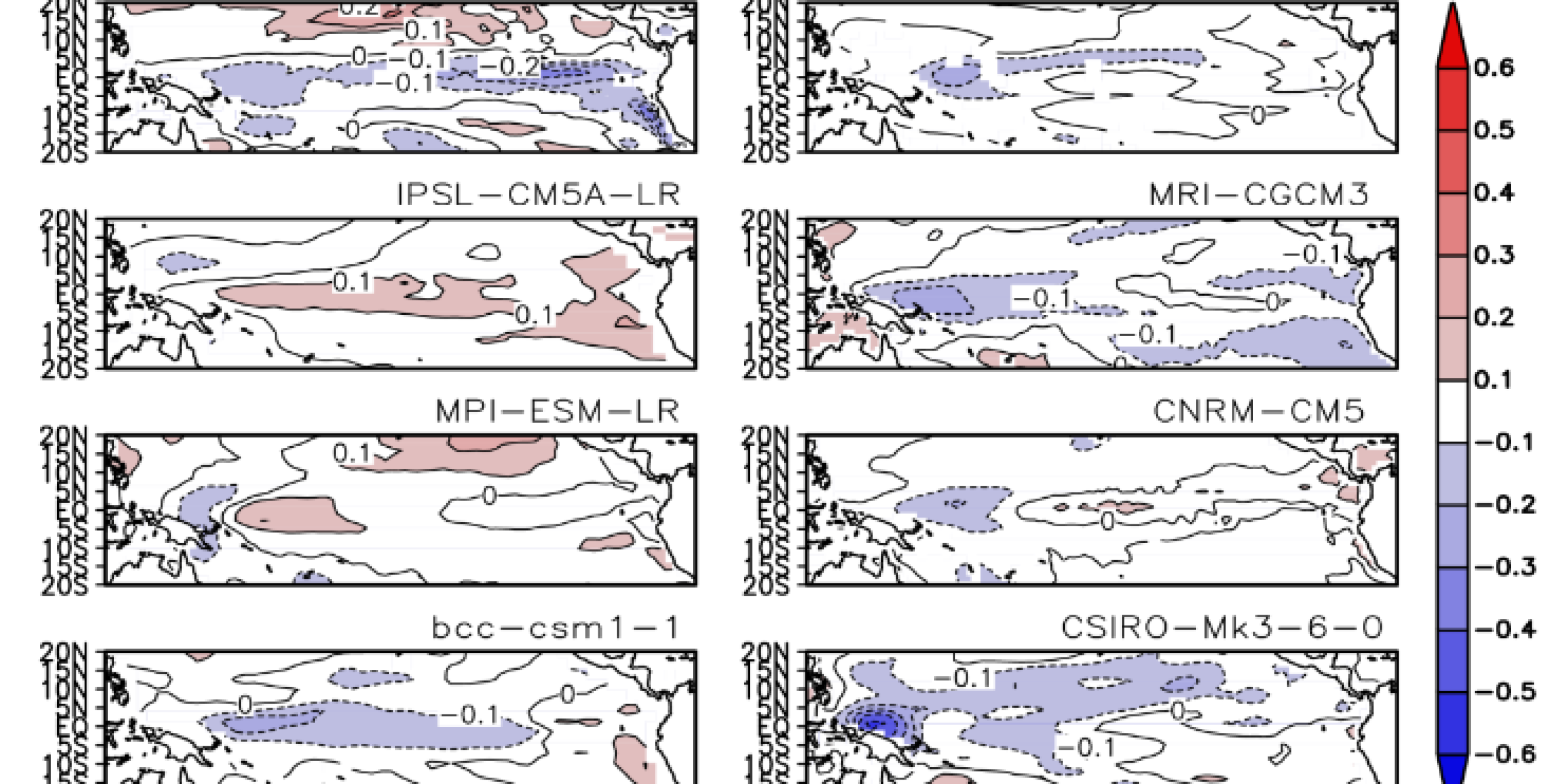The El Niño–La Niña asymmetry is evaluated in fourteen CMIP5 coupled models.The results show that an underestimate of ENSO asymmetry, a common problem noted in CMIP3 models, remains a common problem in CMIP5 coupled models.
The weaker ENSO asymmetry in the models primarily results from a weaker SST warm anomaly over the eastern Pacific and a westward shift of the center of the anomaly. In contrast, SST anomalies for the La Niña phase are close to observations.
To view the early release copy online, visit: http://journals.ametsoc.org/doi/pdf/10.1175/JCLI-D-13-00454.1


Climate Program Office
Advancing scientific understanding of climate, improving society’s ability to plan and respond




Climate Program Office
Advancing scientific understanding of climate, improving society’s ability to plan and respond
Scroll to Top

